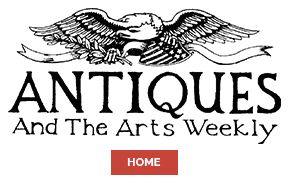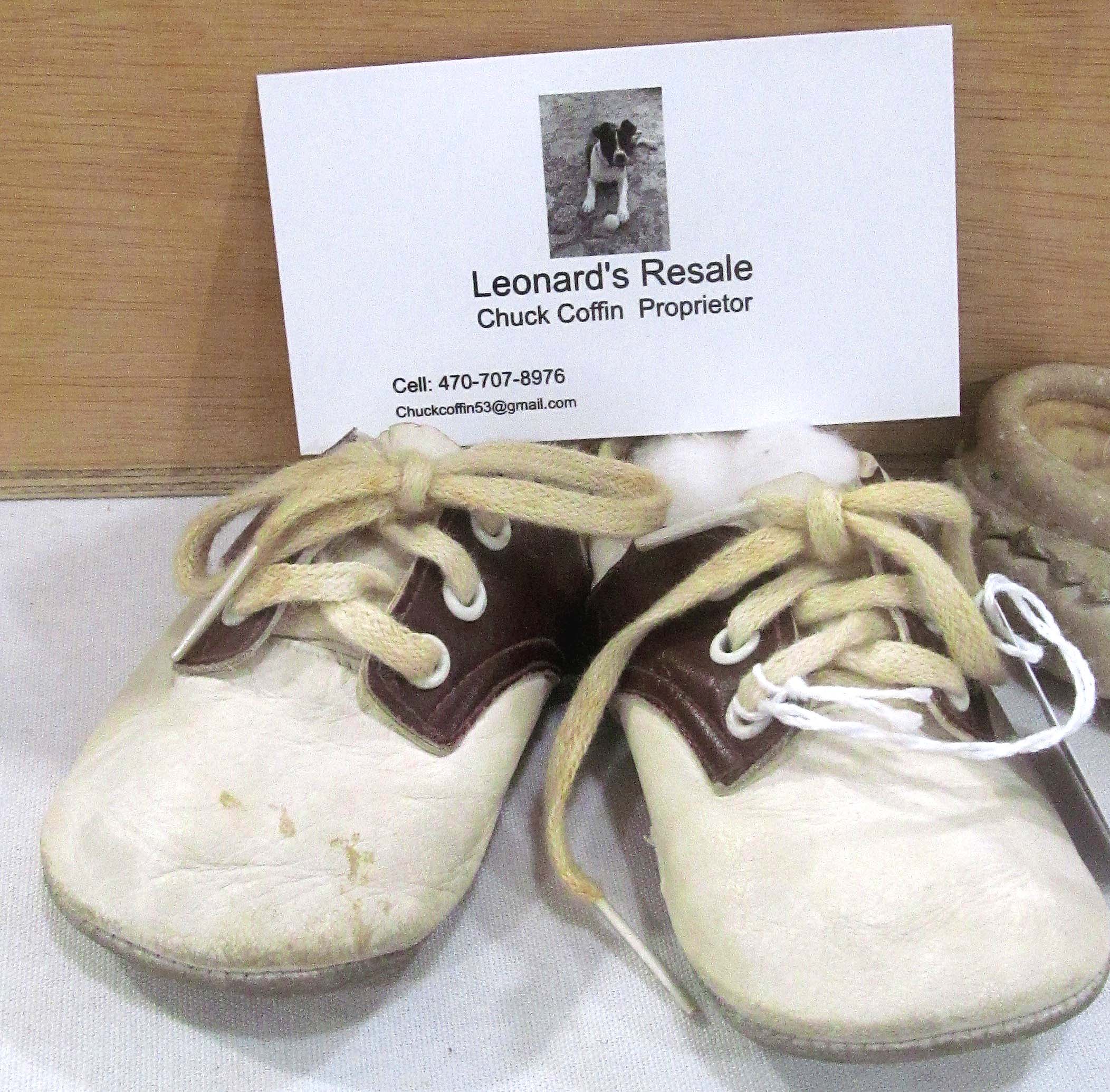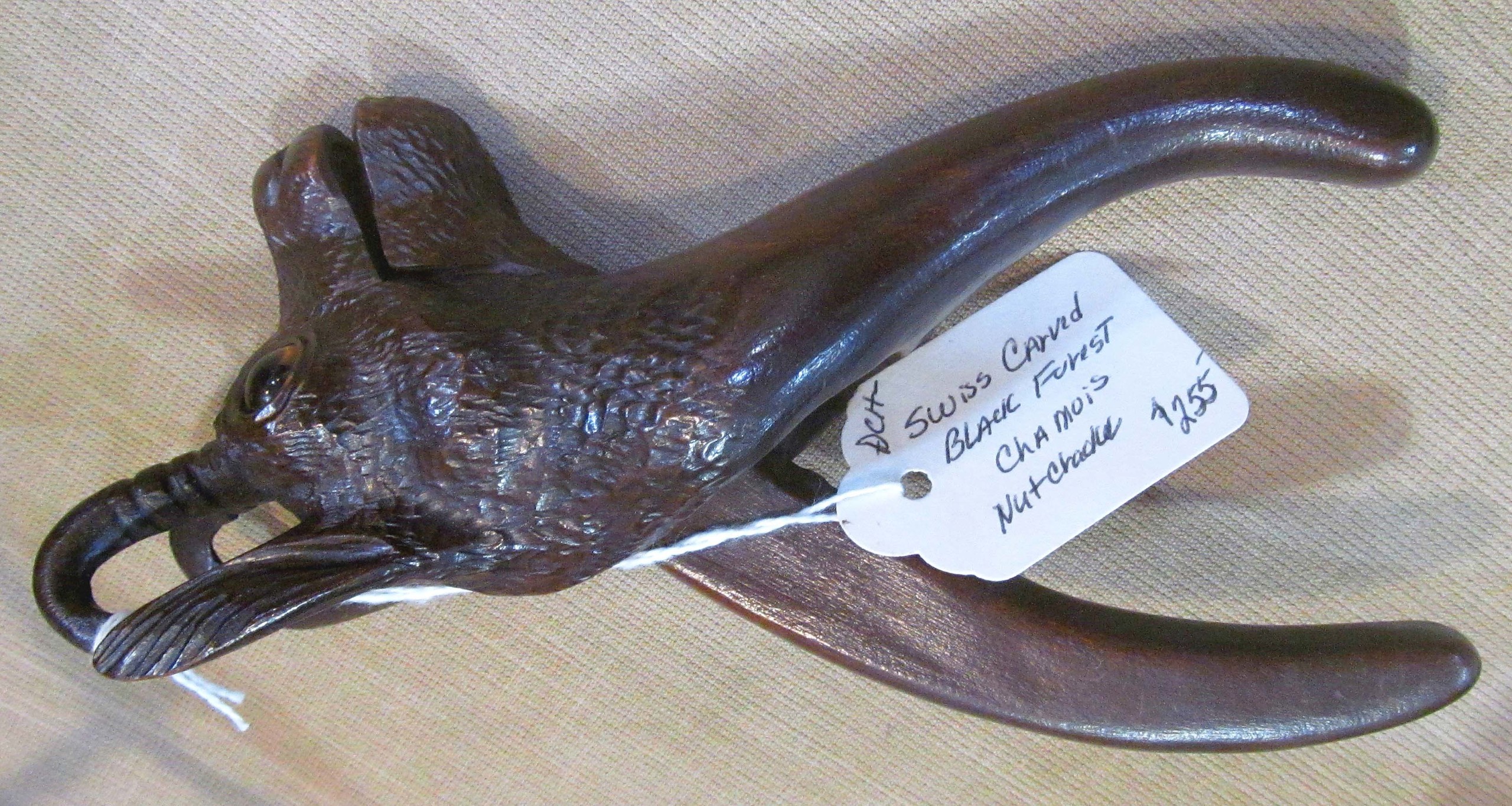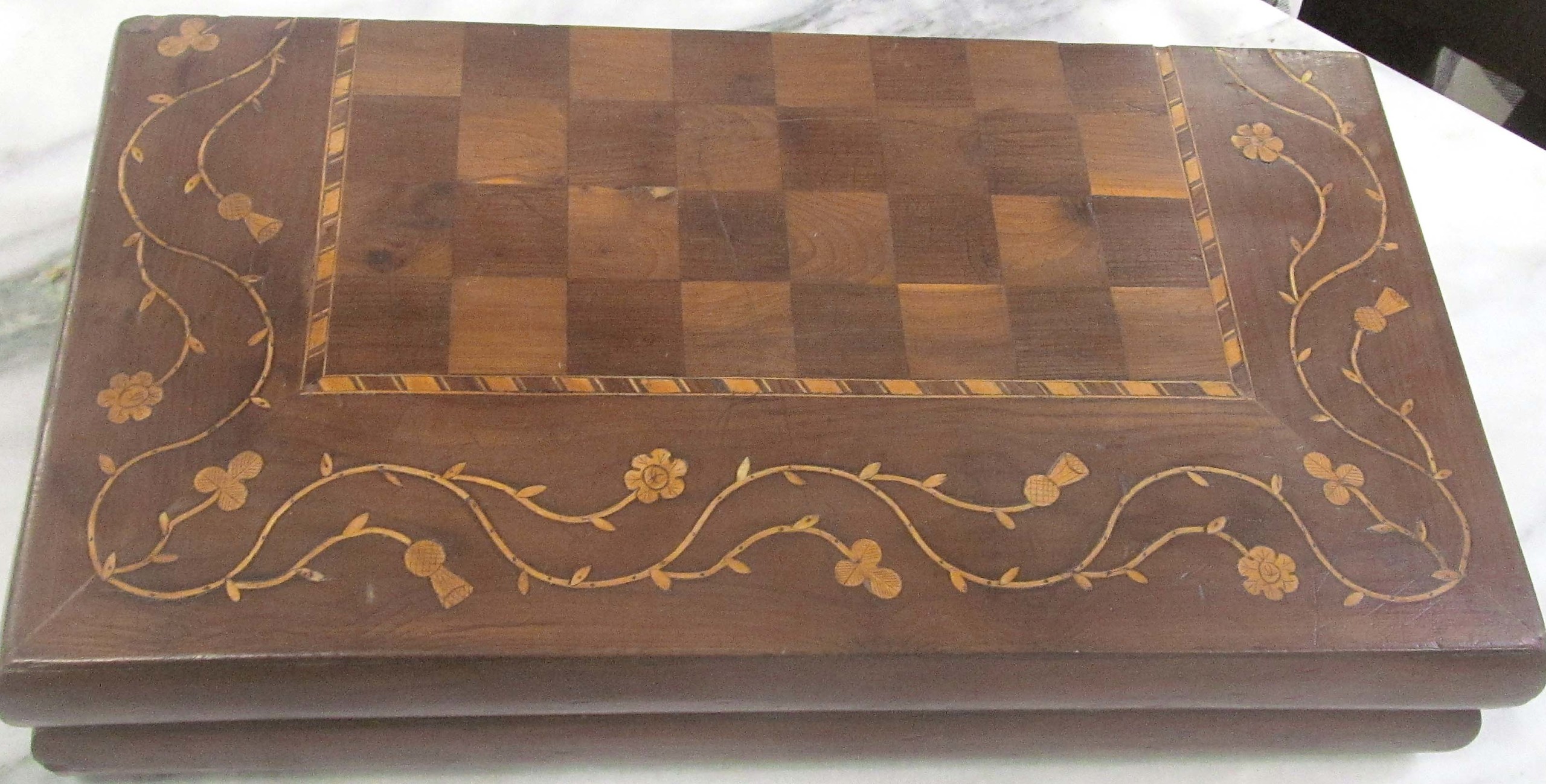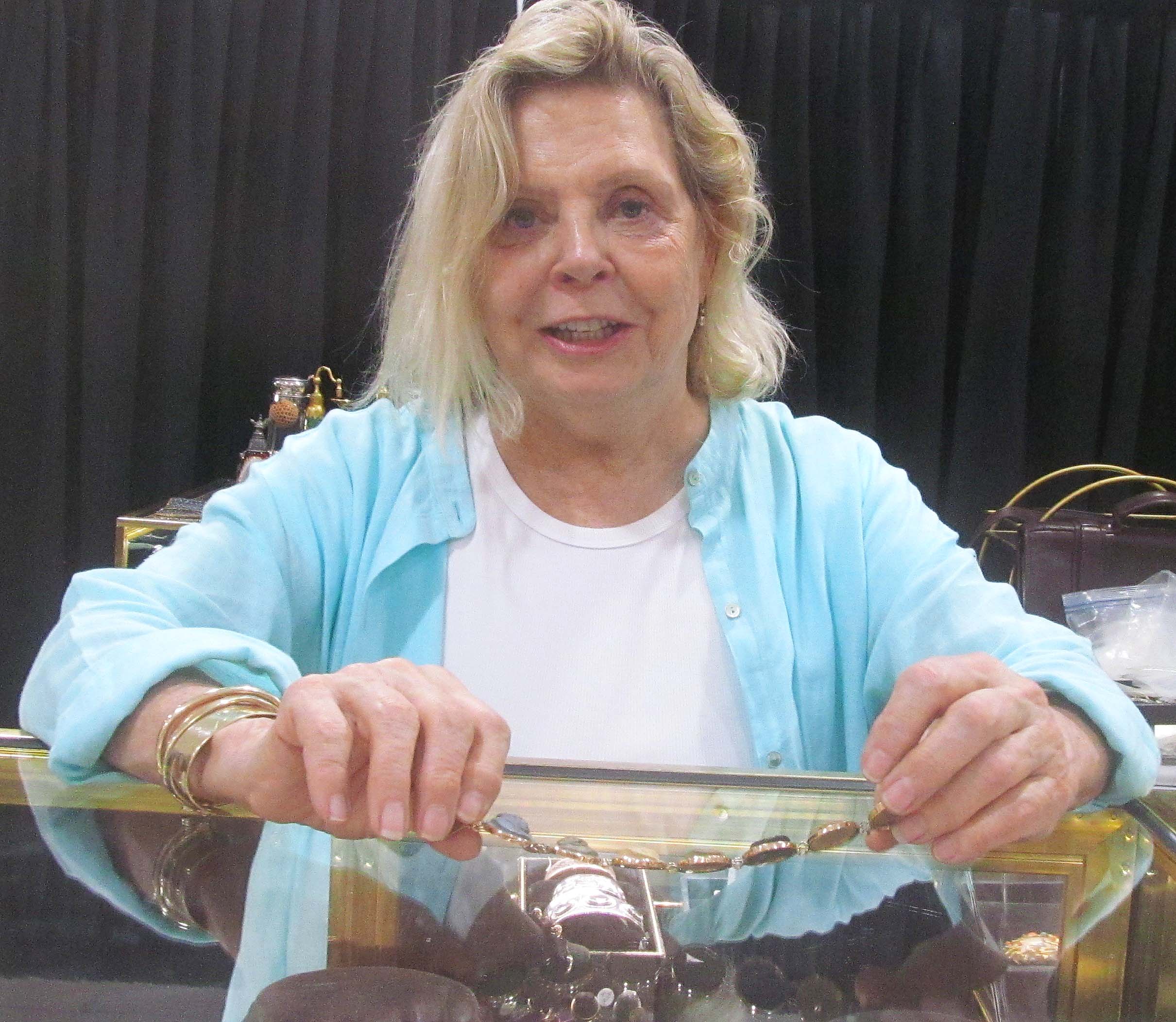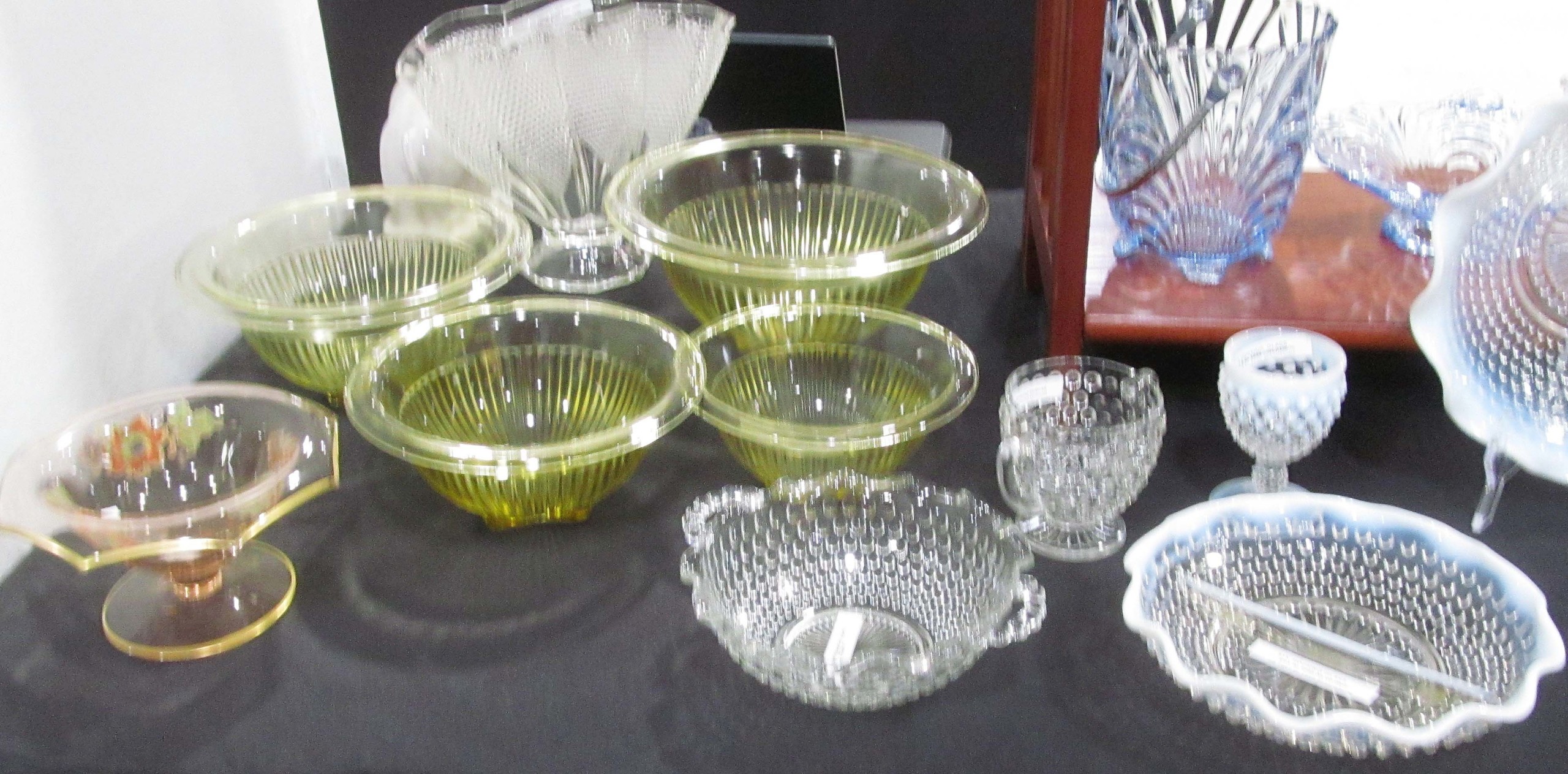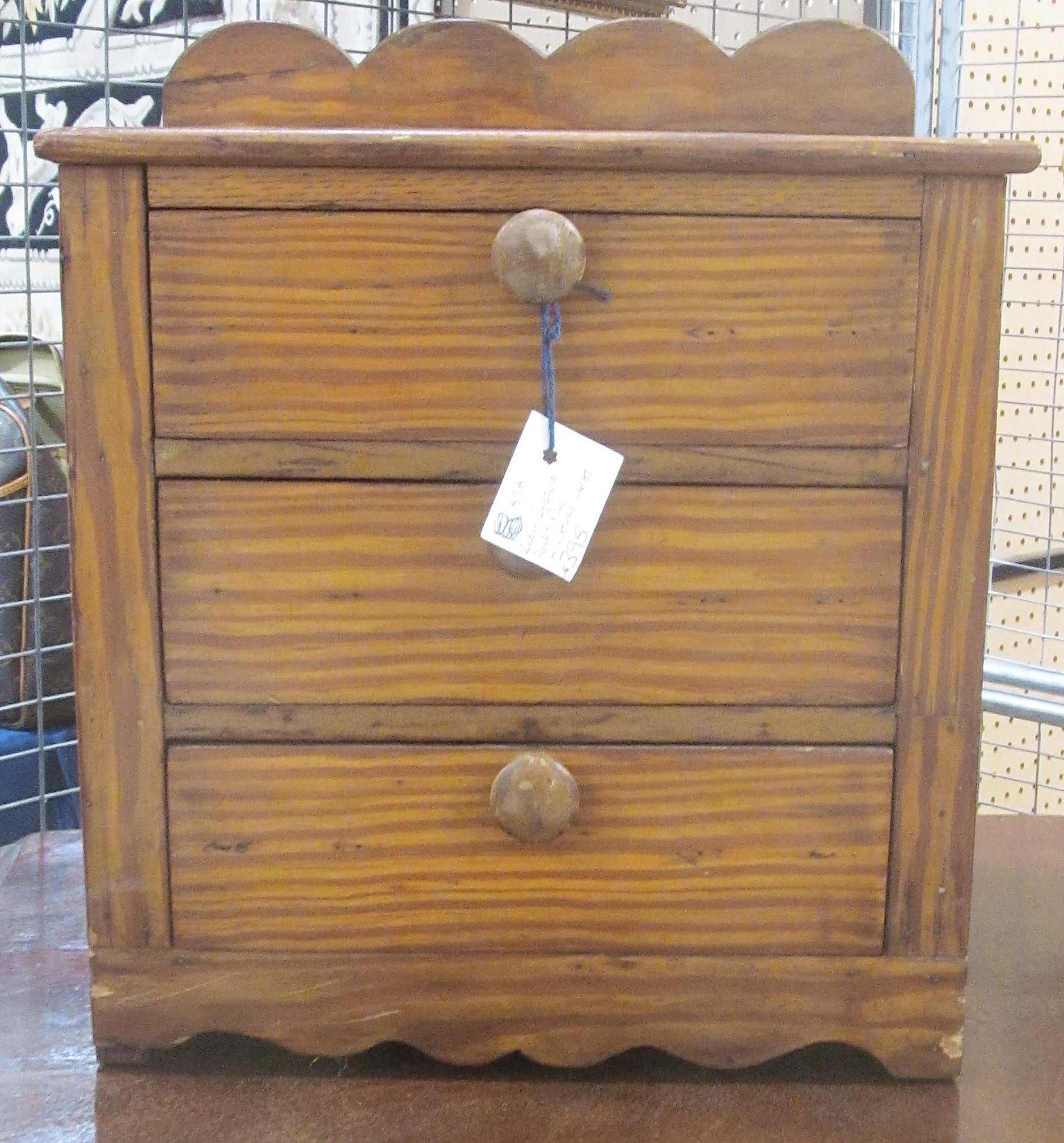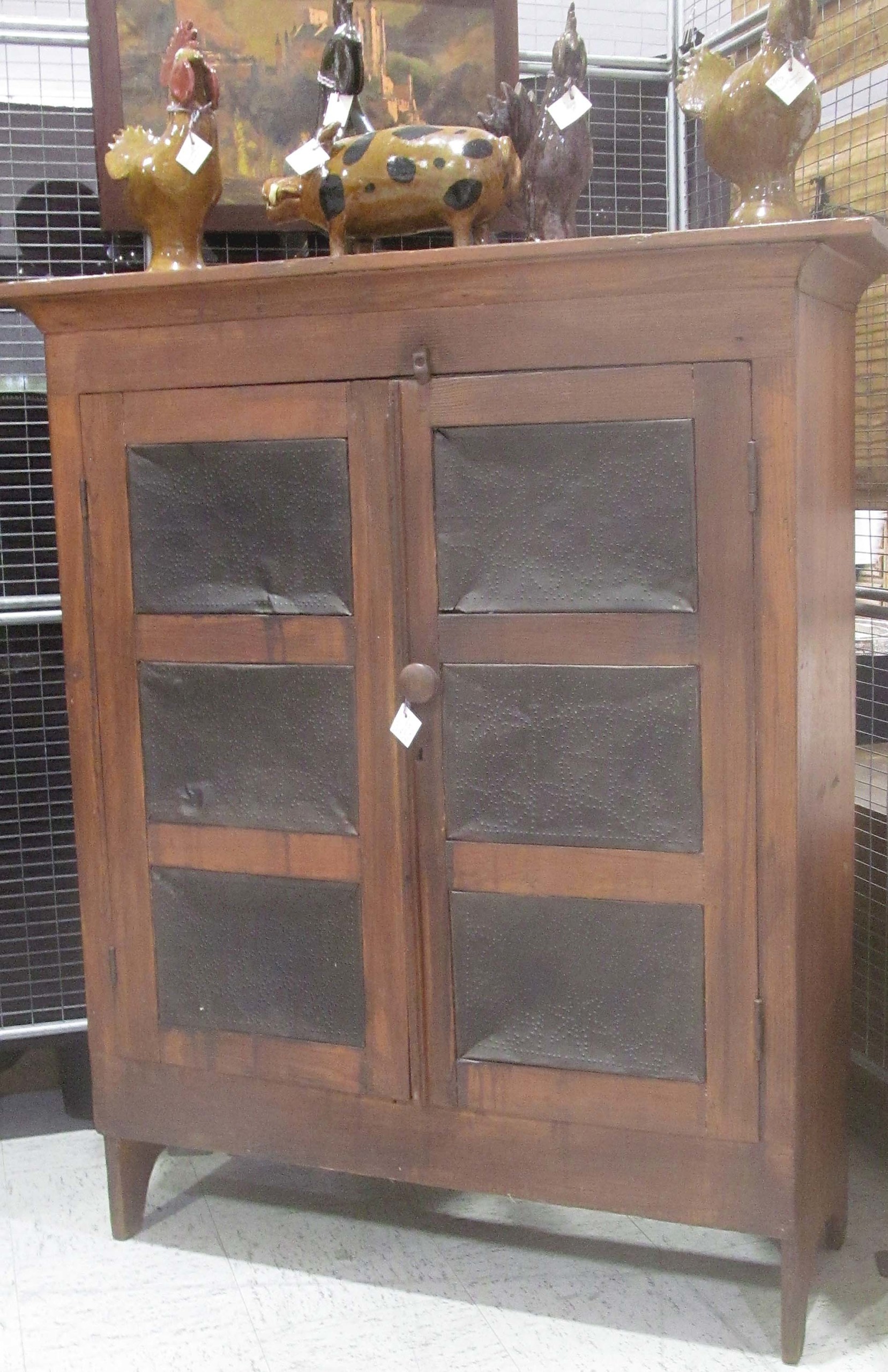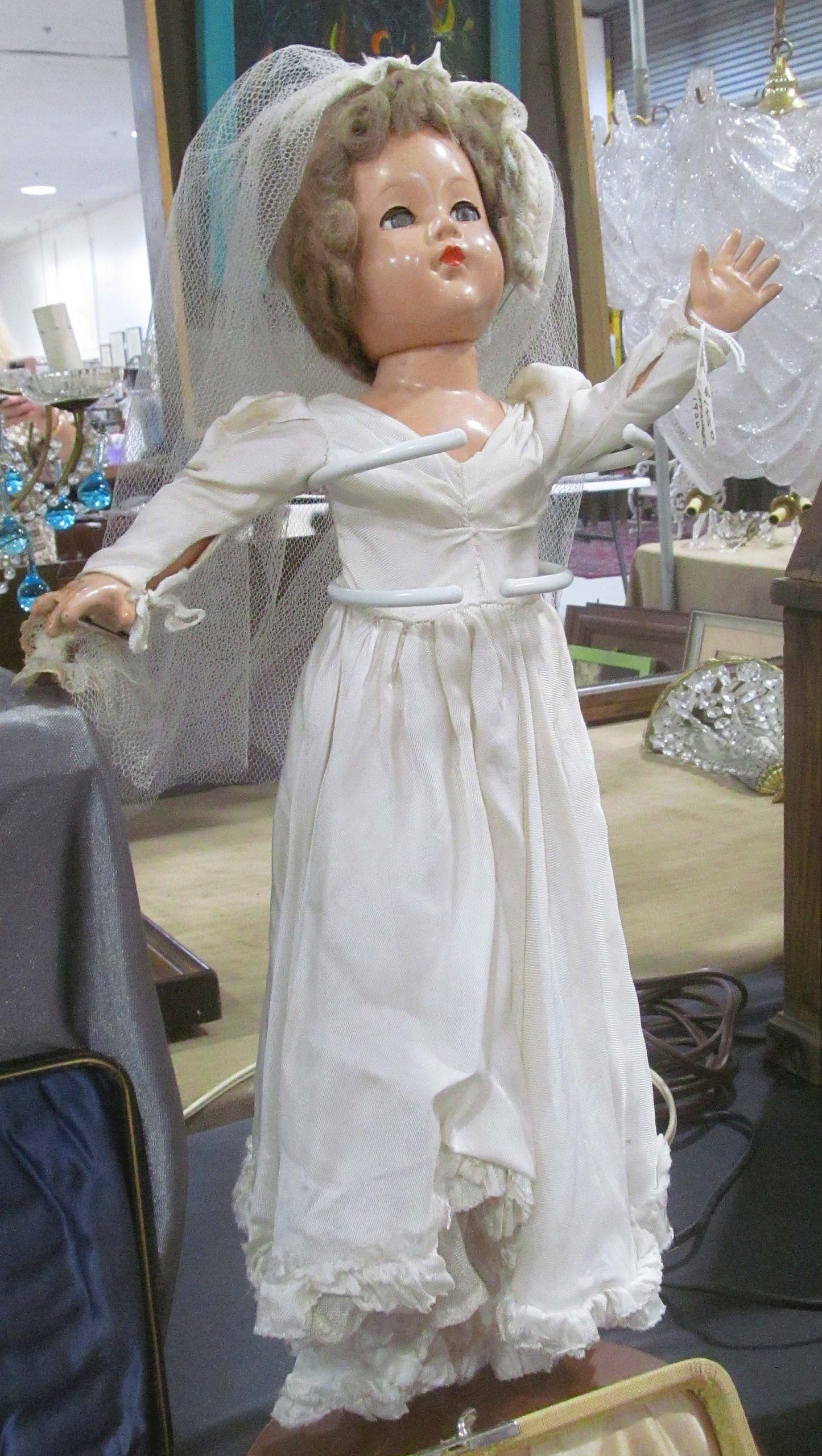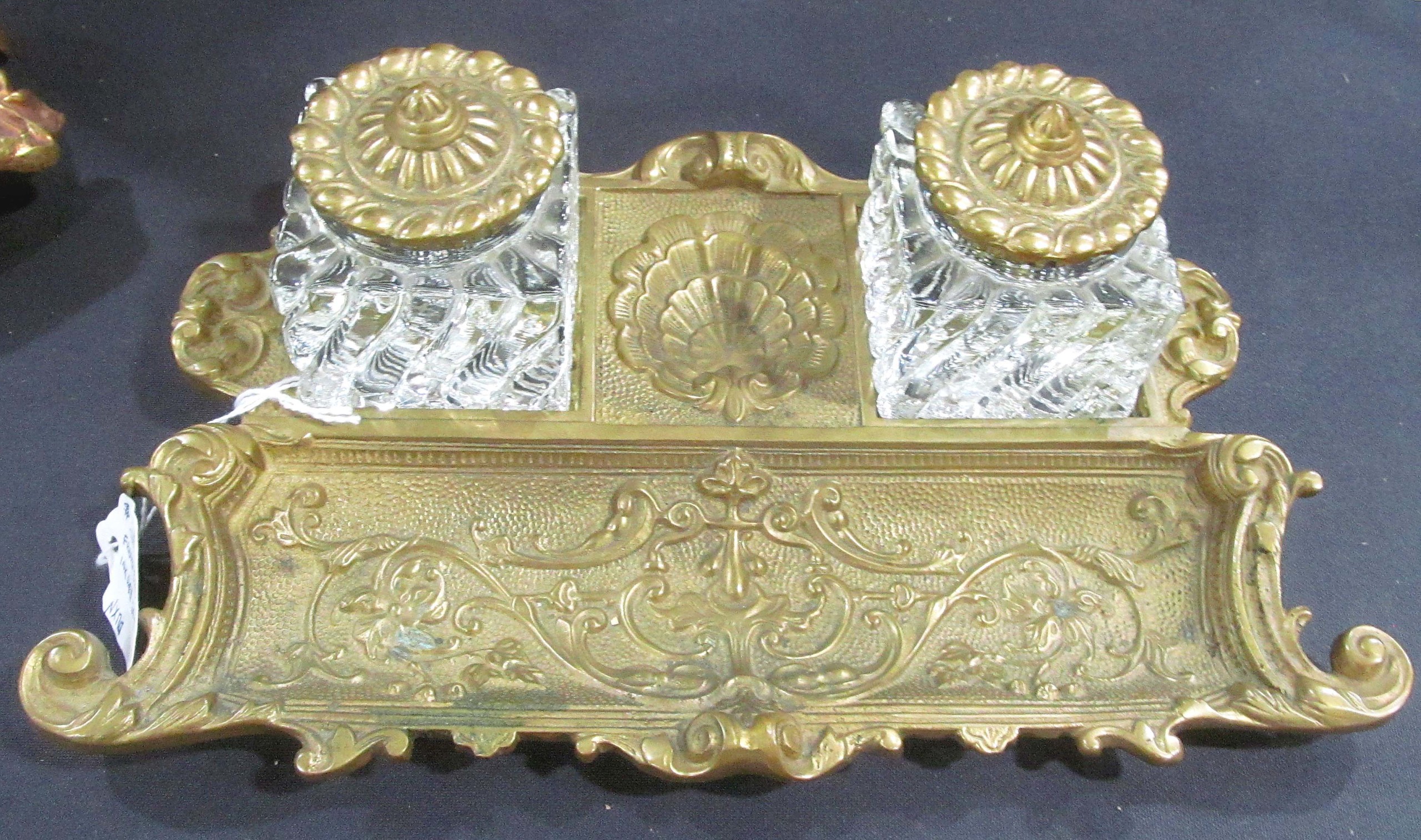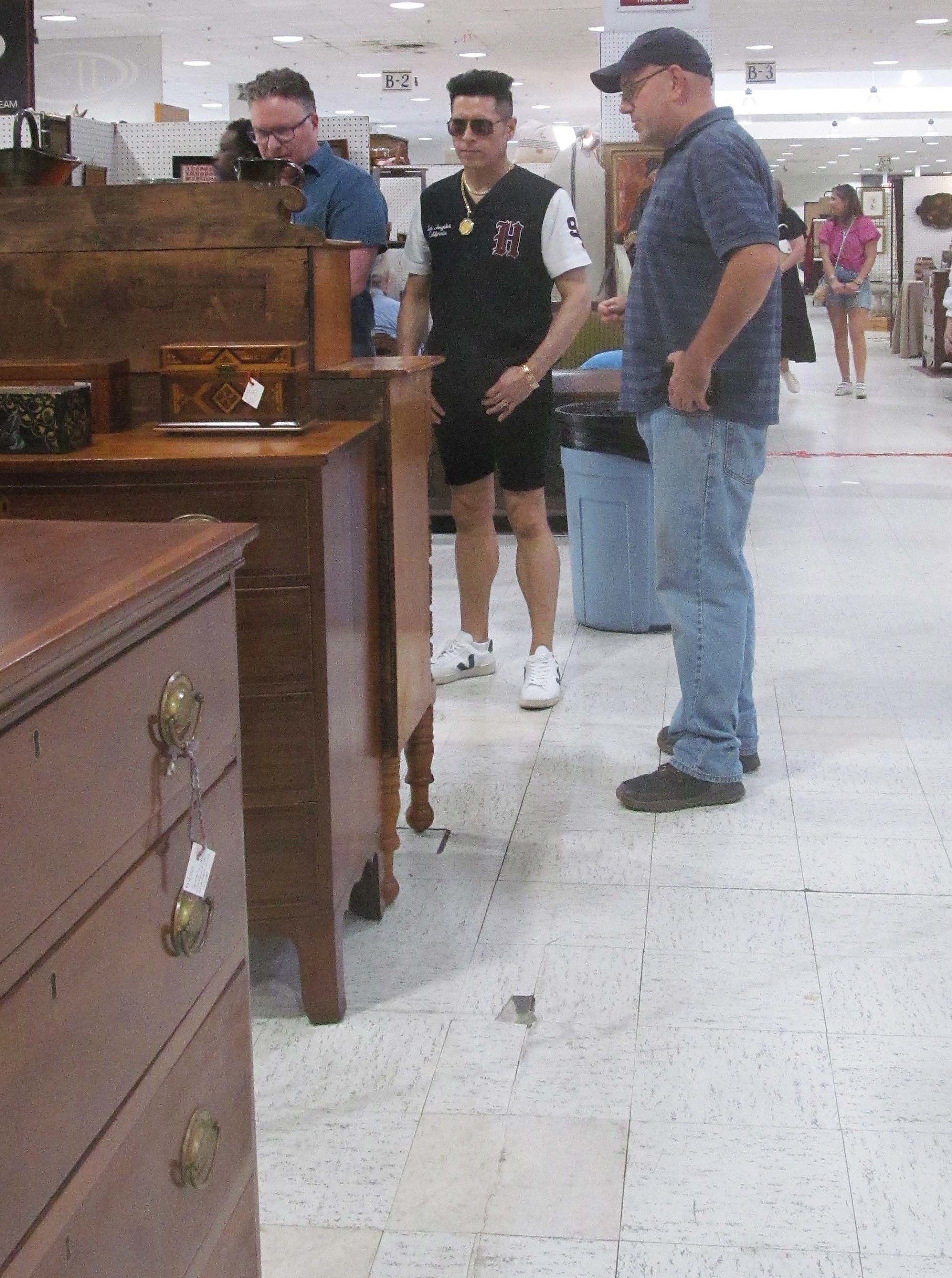
Todd Harper (right) was seen discussing the finer points of one of his case pieces to interested customers. TH Antiques of Athens, Ga.
Photos & Onsite Review by Martin “Marty” Steiner
ATLANTA — Scott Antique Markets can provide an overview of today’s entire antiques market: dealers have come and gone, the range of offerings has changed, as has the mix of browsers and buyers. As the era of antique malls continues to decline — and antiques shows have trended towards designer, floral and decorator appeal — Scott continues to endure.
The show has morphed from a potentially overwhelming antiques experience to a show that requires stamina and selectivity. The mix of vendors now includes modern, Midcentury and decorator dealers in addition to the more traditional antiques dealer. A mid-ground of adaptive use of antique items was also seen. This show continues to occupy two large exhibit buildings between two interstate highways, plus an area of outdoor dealers.
The May market (May 8-11) coincided with the celebration of Mother’s Day and a forecast of depressive, drizzly, intermittent rain. This combination had a definite impact on the number and mix of shoppers, but the serious shopper prevailed, according to the dealers we asked about it.
In his regular spot just inside the door in the North Building was Dr John Crews and a vast display of English boxes, including desk sets and tea caddies. He has been at Scott for nearly eight years, since retiring from the Centers for Disease Control and Prevention (except during the pandemic). “This May’s sales were terrific…best in over two years!”, he shared with Antiques and The Arts Weekly. “I had novice and advanced collectors, interior designers and other dealers visiting the booth. Seventy percent or more are repeat customers. I make a point to have boxes at multiple price points to accommodate my customers’ capabilities. I’m also finding that my customers are becoming more sophisticated and look for early Georgian items and unique forms,” he continued.
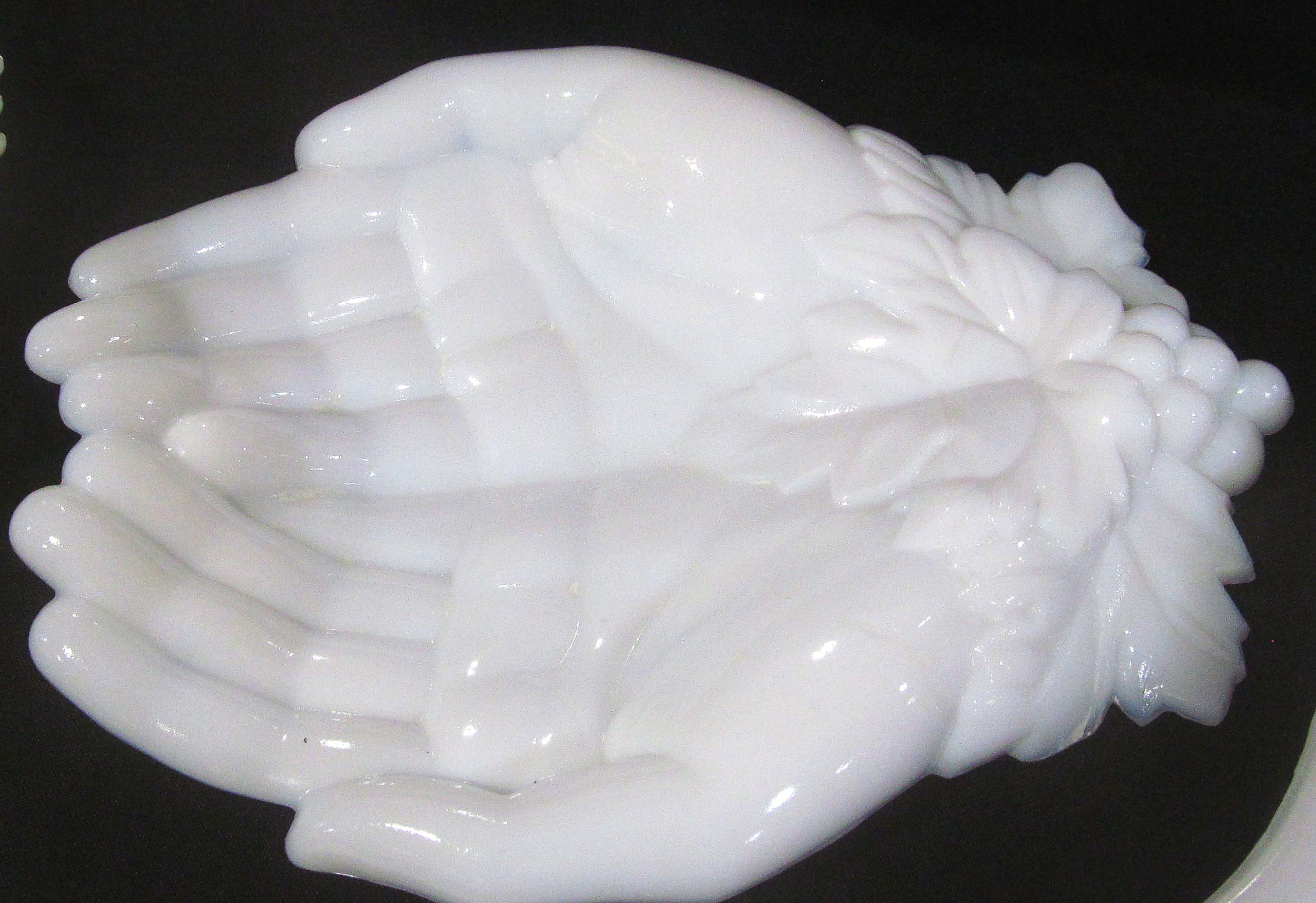
Milk glass hands from the Slusher Collection at $30.
Crews also told us that he has a “small cadre” of young people who are drawn to antique English boxes. Many will not become the serious collectors of the past as their parents might have been but will still seek out a specimen example. They look for age, quality and a story — maybe just one good tea caddy for the mantle.
Crews’ observations appear to apply across the current antiques market.
Other sellers are, like Crews, collectors downsizing or disposing of their collections. Lucy Slusher was offering not only her lifetime collection of American pattern glass but the vast information that she has gained in more than 40 years of collecting. She has set up at Scott for a little more than a year, billing her selections as “The Slusher Collection, 100 years of American glass.” During that time, she has developed a following of repeat customers, who return as they learn a little more about the items from Slusher. Her plans for future Scott shows are to display glass by major manufacturer: Imperial, Cambridge, Heisey, McKee, US Glass and others.
“This to show their remarkable artistry,” she told us. Each item was clearly marked with the manufacturer’s name, the approximate start and ending dates of production and the usually reasonable price. “If it is known that reproductions exist, either from original molds or simply copied, we tell the customer all that we know,” she confided.
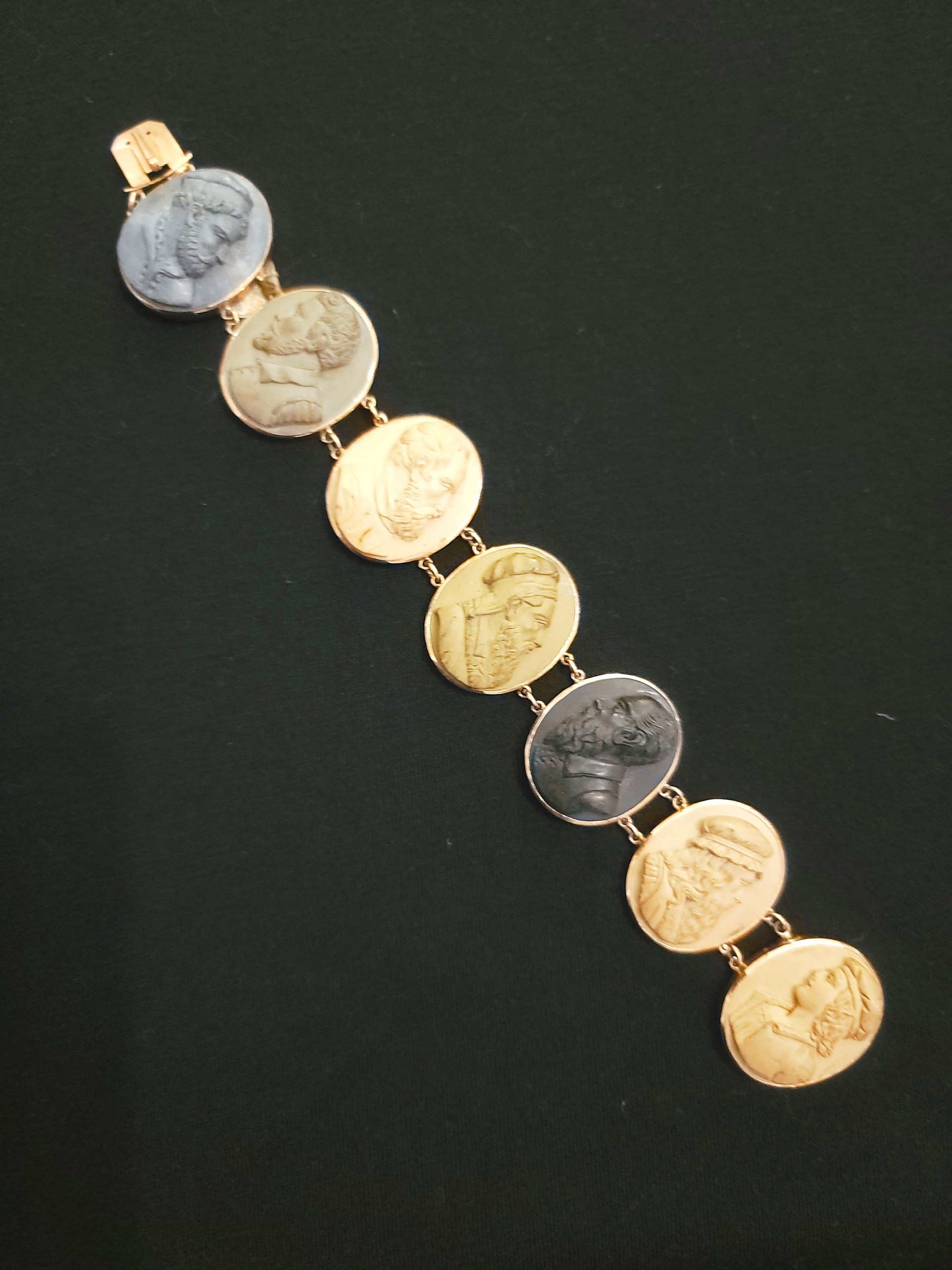
A lesson in art history, this Victorian cameo lava necklace features portraits of Old Master artists carved into lava discs. Nancy LeRoque, Atlanta.
Possibly the most unusual and rarest item seen was Nancy LeRoque’s lava cameo bracelet. Generally speaking, jewelry dealers at antiques shows don’t offer items that fall into sufficient antique or art-collectible areas to draw our attention. However, this example qualified as both an antique and art collectible. Travelers of means in the Nineteenth Century took the Grand Tours when they visited Europe’s cultural and artistic centers. Among the souvenirs of their travels were jewelry pieces. This bracelet was made of 14K yellow gold with a bright polish finish. From the early Nineteenth Century, it featured seven lava cameos of different hues that depicted famous artists of the Italian Renaissance; among those shown were Raphael, Da Vinci, Coreggio and Michelangelo. What made this bracelet rare is that each cameo was signed on the reverse by its carver along with the pictured artist’s identity. It was offered at $7,200 with an appraisal of $7,500.
Leonard’s Resale booth, operated by Chuck Coffin, was full of items that would make wonderful gifts for a mother, or nostalgic ones a mother might give to her children or grandchildren. Nominally priced small objects included a pair of baby shoes ($15), such as the ones that used to hang from the rear-view mirror of the family’s car. A folk art carved and painted panda bear with nursing baby was only $125. Other items included pairs of child-size beaded tourist moccasins, marked $30 and $35 a pair.
Furniture dealers who specialized in classic dark wood pieces — vintage or antique — were represented by two Athens, Ga., dealers: Todd Harper of TH Antiques and Ron Evans, who each have decades of show experience.
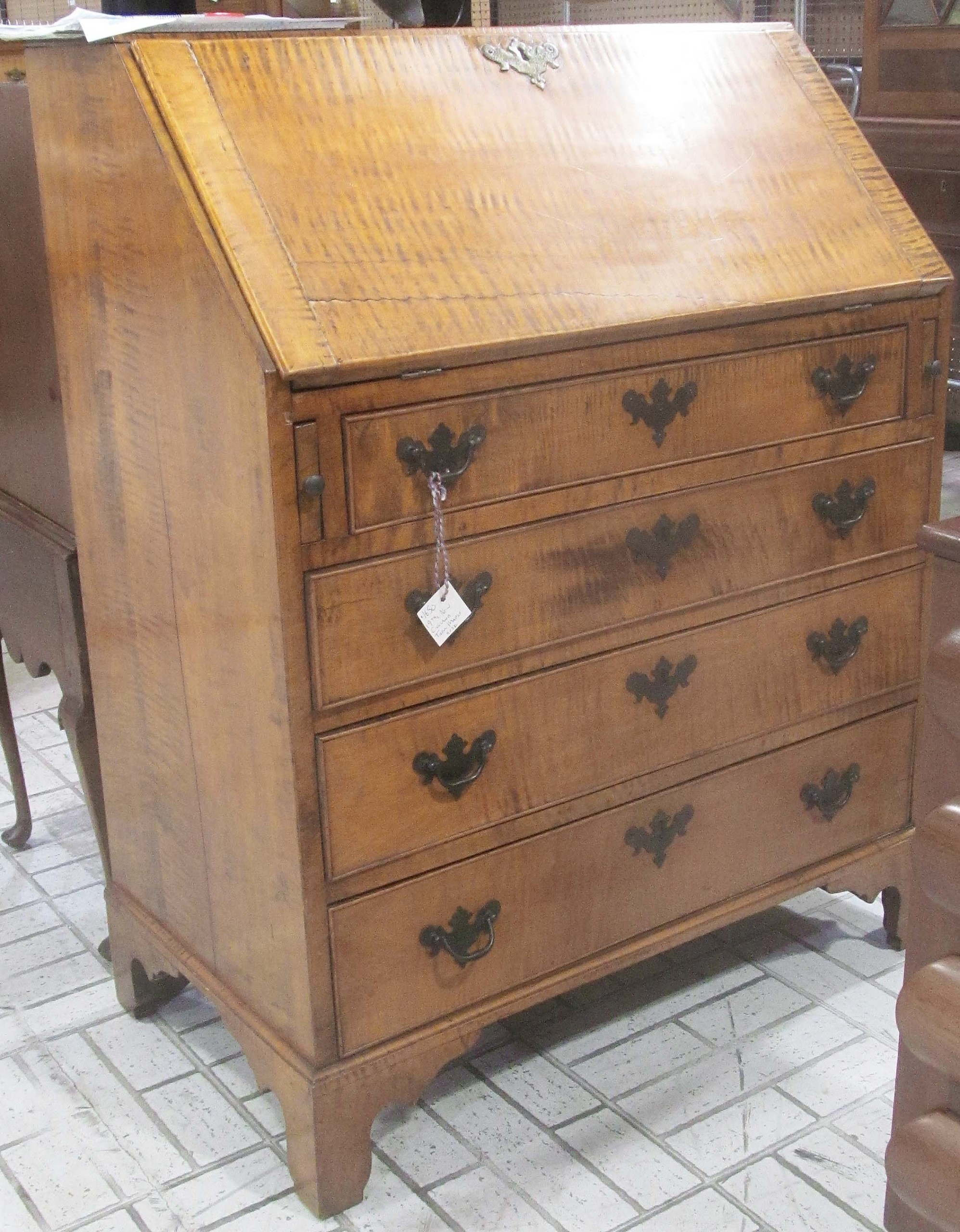
Simplicity, fine materials and craftsmanship set this New England tiger maple slant-lid desk apart from others seen at the May Scott Antique Market. Todd Harper, TH Antiques, Athens, Ga., was asking $1,650.
Harper’s booth included both larger pieces — such as chests of drawers and fall-front desks — as well as small stands; he even had a few folk art and primitive items. An attention-getter was his fall-front desk with tiger maple drawer fronts that was priced $1,650; he was asking the same price for an equally attractive five-drawer tiger maple chest. A number of small stands were displayed and ranged in price from nearly $300 for one- or two-drawer examples, to almost $900 for a circa 1820 Federal two-drawer example with card-table top.
Harper had a few Southern primitive offerings that are getting harder to find. These included a particularly large painted six tin panel pie safe from Greene County, Ga., which set off his more classical works; he was asking $2,650 for it. A large folk carved and painted wood orca whale surfaced for $450 and sold at the show. Nearby, a small folk toy mule wagon was almost lost among Harper’s more formal case pieces. The wagon, a simple item, had a simple price: $125.
Also present were a few Southern folk pottery items including a tall single handle, coil-built jug from the W. F. Hahn pottery in Trenton, S.C., that was marked $265. There seemed to be an unusually large number of miniature chests of drawers at this month’s Scott Market. Harper had an early example made of heart pine that had a backsplash; it was listed at $395.
Ron Evans drew customers in with such examples as a late 1700’s American cherry Chippendale six-drawer tall chest ($1,395). Another impressive tall chest was his circa 1750 Queen Anne cherry broken-arch bonnet-top 10-drawer example with carved top center drawer ($2,850). Impressive smaller items included a circa 1830 carved rosewood game table with inlaid chess board top and backgammon board in the drawer. It had a paw-foot base and was tagged $1,495. Among Evans’ miniature chests was an American Empire three-drawer mahogany example for $595.
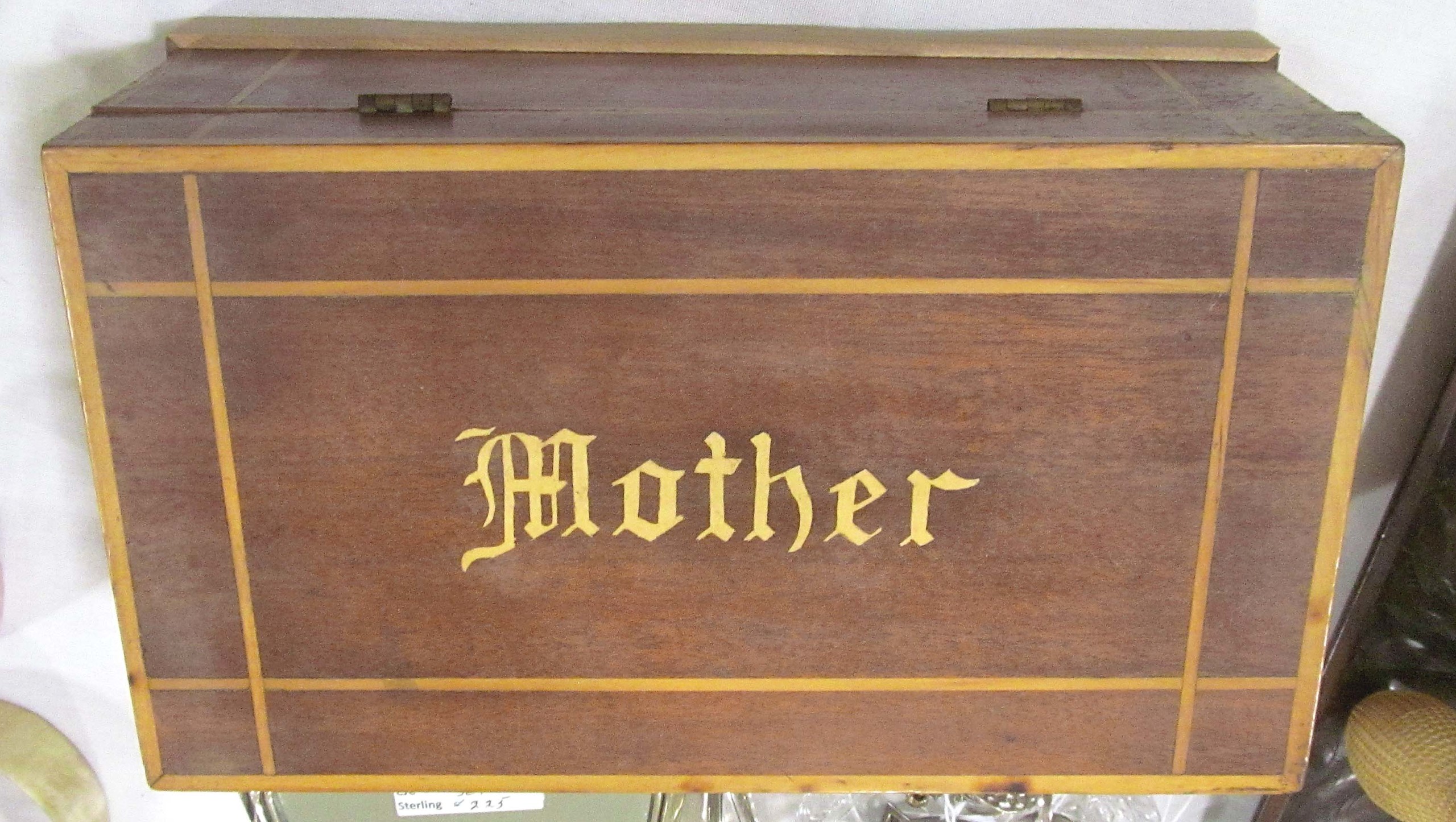
If there was a prize for the booth with the most Mother’s Day material, it would have been awarded to Chuck Coffin of Leonard’s Resale for this inlaid jewelry box at $45.
Atlanta has long been a strong market for imported antiques, — largely Continental, English and even Scandinavian — and a supportive community of dealers who primarily import their inventory has developed.
Antoinette Thomas, A. Vincent Antiques, routinely visits these sources and operates both as a direct importer of European antiques wholesale to dealers and also as a retail outlet. Items seen included two English embroidered samplers for $295 and $325, and a variety of English pocket flasks each priced for less than $100.
Militaria is somewhat scarce at Scott Atlanta Market. The few examples at the show included a selection of World War One trench art and an unusual Soviet Union submarine service themed clock. Trench art from WWI is generally discarded brass artillery shell casings that were used to create either artistic patterns or a record of the war’s activity. While later works from WWII and other conflicts are known, none were seen at Scott in May. This occasional presence of militaria is just one example of why every month at Scott Atlanta brings something to surprise the shopper.
Like militaria, if it exists, it just may turn up at a Scott monthly market and Jeff Davis (yes, you read that right!) of Heritage Art and Antiques, Chamblee, Ga., might have it in his booth. His May offerings included a saddle leather backpack of unknown age for $110. A pair of tall ornate American hand-wrought iron andirons were marked $750 and were displayed with kettles to complete a cozy home scene. Most intriguing was an all-wood cabinet maker’s work bench. Even the clamp, located next to sockets designed to hold wood chisels, was wood. “Ask for price,” the sign read.
Scott Antique Markets in Atlanta are scheduled for the second weekend of July, August and September, opening on the Thursday before and running through Sunday.
For information, www.scottantiquemarkets.com.
